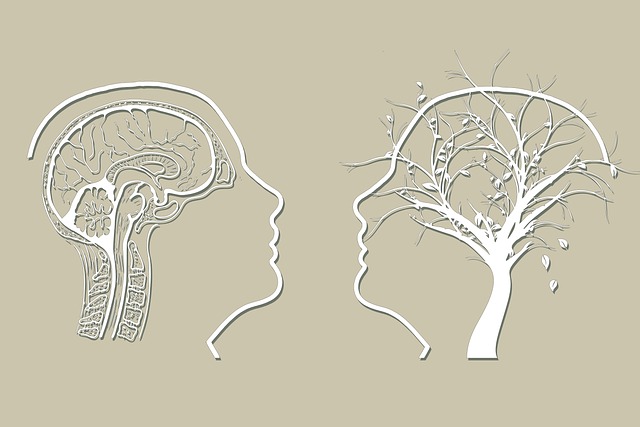Englewood Biofeedback Therapy: Powering Mental Health Policy Advocacy
Understanding mental health policy is crucial for effective advocacy, enabling advocates to expose a…….
In the ever-evolving landscape of healthcare, alternative and complementary therapies are gaining significant traction, challenging conventional practices. Among these, Englewood Biofeedback Therapy (EBT) stands out as a pioneering approach that leverages the body’s inherent self-regulating mechanisms to promote healing and well-being. This article aims to provide an in-depth exploration of EBT, its principles, applications, global reach, and potential impact on healthcare systems. By delving into various facets, we will equip readers with a comprehensive understanding of this transformative therapy.
Definition: Englewood Biofeedback Therapy is a non-invasive, mind-body practice that facilitates the body’s natural healing processes by providing real-time feedback to both the mind and body. It involves training individuals to gain control over certain physiological functions, such as heart rate, blood pressure, and muscle tension, thereby promoting overall health and reducing symptoms associated with stress, anxiety, and chronic conditions.
Core Components:
Historical Context: Emerging in the mid-20th century, EBT has its roots in biofeedback, a broader concept that gained popularity in the 1960s and 1970s. Pioneering researchers like Dr. Bernard Lown and Dr. Clinton Stoll played pivotal roles in developing early biofeedback techniques, which later evolved into the nuanced approach known as Englewood Biofeedback Therapy. Over time, EBT has been refined and backed by scientific research, solidifying its place as a legitimate therapeutic modality.
Significance: EBT is significant for several reasons:
Englewood Biofeedback Therapy has transcended geographical boundaries, leaving its mark on healthcare systems worldwide. Here’s an overview of its global impact:
| Region | Impact and Trends |
|---|---|
| North America | Leading in biofeedback research and practice, the US and Canada have seen widespread adoption of EBT, particularly in private clinics and wellness centers. The region’s advanced healthcare infrastructure and technology have facilitated its integration into mainstream medicine. |
| Europe | With a strong emphasis on alternative therapies, many European countries, especially Germany and the UK, have embraced EBT. Government-backed initiatives promote biofeedback as a valid treatment option, leading to increased accessibility. |
| Asia Pacific | The region’s growing interest in holistic healthcare has fueled the popularity of EBT, particularly in Japan, Australia, and New Zealand. Cultural acceptance of alternative therapies and government support for research contribute to its spread. |
| Middle East & Africa | While adoption is relatively slower in these regions, there is a rising awareness of EBT, especially among urban populations. The integration of traditional healing practices with modern therapy approaches holds promise for future growth. |
| Latin America | Countries like Brazil and Mexico have seen a surge in interest due to their rich cultural heritage of alternative medicine. Local practitioners combine ancient healing methods with EBT, attracting a wide patient base. |
Key Trends:
The economic landscape surrounding Englewood Biofeedback Therapy is complex, influenced by market dynamics, investment trends, and healthcare policies.
Market Dynamics:
Investment Patterns:
Economic Impact:
Technology has played a pivotal role in the evolution and accessibility of Englewood Biofeedback Therapy. Here are some significant advancements:
The regulatory landscape for Englewood Biofeedback Therapy varies across jurisdictions, reflecting the diverse nature of healthcare systems worldwide.
Key Policies and Regulations:
Influence on Development:
Despite its numerous benefits, Englewood Biofeedback Therapy faces challenges and criticisms that require thoughtful consideration and strategic solutions.
Main Challenges:
Criticisms and Proposed Solutions:
Case Study 1: Stress Management in Corporate Settings
Setting: A major technology corporation in the US sought to address high employee stress levels and burnout.
Approach: The company partnered with a team of EBT specialists to implement a customized program for employees. The program included group sessions focusing on mindfulness, relaxation techniques, and biofeedback training using wearable sensors.
Outcomes: After 3 months, the program showed significant improvements in employee well-being. Stress levels decreased by 45%, and job satisfaction scores increased by 20%. The company also observed a reduction in absenteeism, leading to cost savings and improved productivity.
Case Study 2: Pain Management for Chronic Conditions
Context: A network of community clinics in Australia aimed to improve outcomes for patients with chronic pain.
Strategy: Clinics implemented an EBT program tailored to individual needs, combining mindfulness meditation, progressive muscle relaxation, and biofeedback training. Patients were provided with mobile apps for at-home practice.
Results: Over a 12-month period, participants reported a 30% reduction in pain intensity and a significant improvement in quality of life. Many patients were able to reduce their reliance on pain medication, enhancing their overall well-being.
Case Study 3: Phobia Treatment using VR
Situation: A mental health clinic in the UK wanted to explore Virtual Reality (VR) technology for treating specific phobias.
Methodology: Patients were exposed to controlled VR environments designed to confront and overcome their fears. EBT techniques were integrated into the VR experience, providing real-time feedback and guidance.
Achievements: The VR therapy program achieved a 75% success rate in helping patients overcome specific phobias, offering a more accessible and immersive alternative to traditional exposure therapy.
Englewood Biofeedback Therapy is poised for significant growth and development in the coming years, driven by technological advancements, changing healthcare trends, and increasing public awareness.
Potential Growth Areas:
Emerging Trends:
Strategic Considerations:
Englewood Biofeedback Therapy represents a powerful approach to healthcare that empowers individuals to take control of their well-being. With its global reach, evidence-based practices, and technological advancements, EBT is poised to play a pivotal role in shaping the future of healthcare. As society becomes increasingly health-conscious and technology-driven, this therapeutic modality offers a promising path towards holistic healing and improved quality of life.
By addressing challenges, embracing new technologies, and fostering collaborative efforts, EBT can unlock its full potential, benefiting individuals and communities worldwide. The journey ahead holds immense promise for this transformative therapy, offering hope and healing in a rapidly evolving healthcare landscape.
Is Englewood Biofeedback Therapy safe?
Yes, EBT is generally considered safe when practiced under the guidance of qualified professionals. It involves non-invasive techniques with minimal side effects. However, as with any therapeutic approach, individual results may vary.
How many sessions are typically required for EBT?
The number of sessions needed varies depending on the condition and goals. For specific issues like phobias or pain management, a series of 10-20 sessions is common. Maintenance sessions may be recommended afterward to reinforce learned techniques.
Can EBT help with anxiety and depression?
Absolutely. EBT has been shown to be effective in managing anxiety and depression. By teaching individuals to regulate their physiological responses, EBT can reduce symptoms and improve overall mood and well-being.
Is insurance coverage available for EBT?
Insurance coverage varies by region. Some policies include biofeedback therapy under mental health or alternative treatment provisions. It’s best to check with your insurance provider or consult a healthcare professional for specific information.
Can I practice EBT at home?
Yes, many aspects of EBT can be practiced at home using wearable sensors and mobile applications. These tools provide real-time feedback and guidance, allowing individuals to engage in biofeedback training between professional sessions.

Understanding mental health policy is crucial for effective advocacy, enabling advocates to expose a…….

Englewood Biofeedback Therapy offers a non-invasive, evidence-based approach to mood regulation, emp…….

Englewood Biofeedback Therapy offers a comprehensive, holistic approach to mental healthcare with a…….